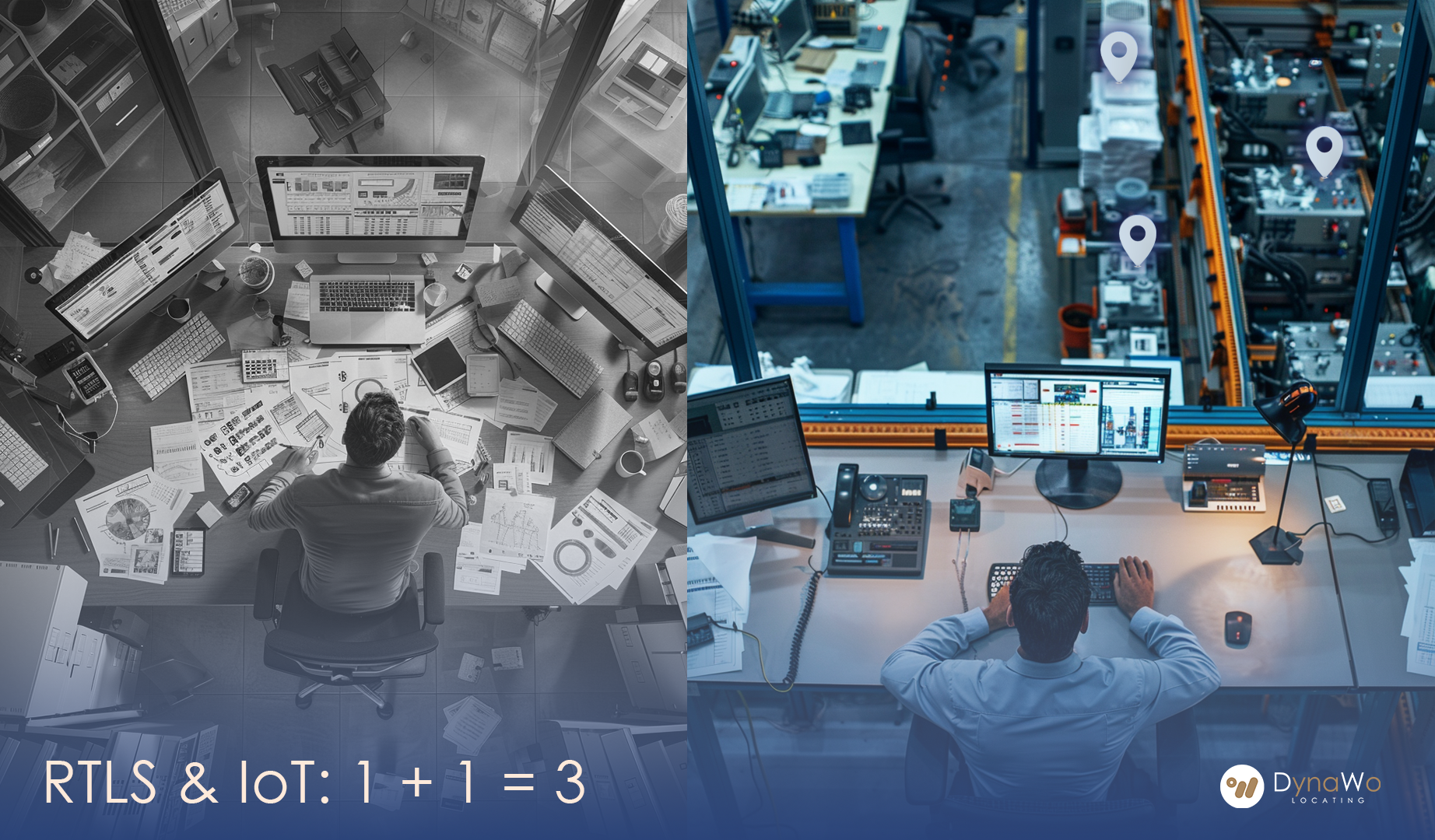Seeing RTLS as a standalone asset-tracking tool misses the full picture. When RTLS is woven into an IoT ecosystem, it becomes the backbone of a truly intelligent facility, aligning every IoT node.
In today’s operations, effective monitoring isn’t about piecing together tech—it’s about integrating systems to see the bigger picture, instantly.
RTLS systems are evolving to do more than locate. When RTLS and IoT converge, you get:
- High-Value Asset Tracking + Preservation — BLE gateways combining location and condition data at a zone level, for example, verifying a high-value artifact is in the archive while pulling light, humidity, and vibration data from environmental sensors to protect it from degradation.
- Smart Anti-Collision Systems — UWB anchors delivering sub-meter accuracy that feeds into IoT process automation, mapping the exact route of a factory forklift while taking into account weight of load, speed, and machinery status, to dynamically create best paths to avoid collisions.
- Environmental Monitoring + Anti-Theft Systems — Better GPS modules pairing live location with IoT security systems, tracking refrigerated trucks in remote locations between destinations while live-streaming cargo temperature and door-open status to prevent spoilage or theft.
- Smart Access Control — Wearable tags act as secure credentials for entering restricted areas with automated door control or barriers; for vehicles, tags can serve as IDs combined with geofencing for automated access authorization.
- Dynamic Electronic Shelf Labels — Integrating location data into digital signage to display dynamic content based on an item’s current position.
- Interactive Retail Displays — Detecting when a tagged product is picked up, triggering nearby displays to play relevant content, and tracking interaction frequency to gauge customer interest.
When all data streams converge, you avoid siloed alerts and fragmented dashboards. Instead, you get a consolidated dashboard where you can correlate location, condition, and behavior metrics without toggling multiple apps — so the system works for you, not the other way around.
With this, the possibilities are endless:
- Managers gain oversight without noise — from verifying the location and preservation status of high-value assets, to seeing live environmental and security data, without juggling multiple systems.
- Engineers can see the full-spectrum data for predictive maintenance and design improvements — from sub-meter vehicle routing analytics in anti-collision systems, to interactive retail data that reveals how customers engage with products.
- Operators can identify root causes faster — whether it’s spotting temperature deviations in a refrigerated shipment before spoilage occurs, confirming a secure access control log, or detecting anomalies in dynamic shelf label positioning.
RTLS + IoT = facility intelligence. It’s not just data — it’s clarity, efficiency, and foresight, all channeled into real-time action. This is how RTLS shifts from “just tracking” to operational intelligence — intuitive, integrated, and indispensable.
When you build operations around interoperability, you’re not upgrading tech. You’re upgrading outcomes.
Curious? Leave us a message.
#DynaWo #RTLS #IoTIntegration #HybridRTLS #SmartOperations #IndustrialIoT

